Design Strategy: A North Star Approach
The digital and physical worlds are starting to come together more seamlessly–it’s only the tip of the iceberg in terms of what’s coming.
What do we mean when we talk about an enterprise level design system? We’re referring to a single source of truth for an entire organization that uses a singular design language to guide the development of products.
What we don’t mean: This is not a rebrand, it’s not a kit of parts, and it’s more than a style guide. We’re not looking to create a collection of artifacts and call it a day; the connective tissue that keeps this all together and makes it work is the design vision that acts as a North Star for designers and communicates to product teams the global purpose of their designs as well as the design principles that guide product teams by helping them reach the ultimate purpose or goal of the product.
Ultimately, what we’re talking about is the next evolution of the CDX, strengthened and expanded to serve the needs of the product teams and better reflect the brand.
So now that we’re on the same page about what a design system is, let’s talk about some real numbers as to what they can accomplish. Companies that use enterprise design systems saw a 14.4% increase in customer willingness to spend, a 16.6% improvement in willingness to recommend products, and a 400% increase in customers converted.
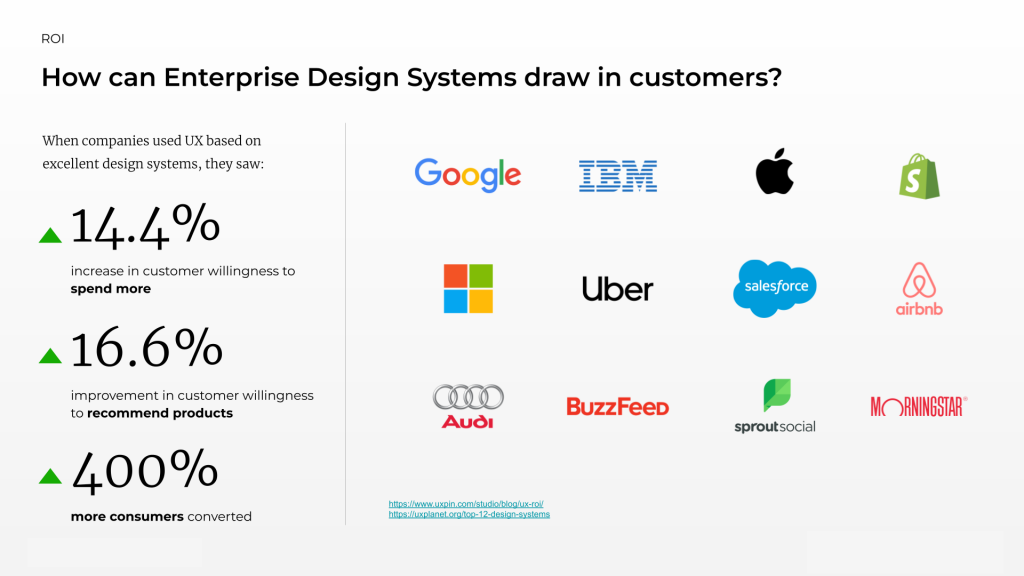
As you can see on the right, there are a lot of well-known companies that use enterprise-level design systems. Companies like Microsoft and Apple, and also companies like Google and IBM, which are similar to Clarivate in that they’ve grown largely through a merger and acquisition model and so needed to pull together disparate parts.
This initial MVP phase consists of five 2-week sprints designed to deliver the strategy and vision needed to make the business case for phase two of the project.
We started out by interviewing a variety of stakeholders, including designers and other stakeholders across multiple product categories as well as brand and marketing, in order to understand the needs and pain points people are facing. We also did a brand walkthrough and over 15 product walkthroughs, which you can see on the right hand side.
We then completed a comprehensive UI audit of 15 prioritized products so that we could identify areas of inconsistency across products as well as any gaps. We organized the resulting 952 captured elements across 15 categories with 71 subcategories of UI components. The resulting analysis is linked in the appendix.
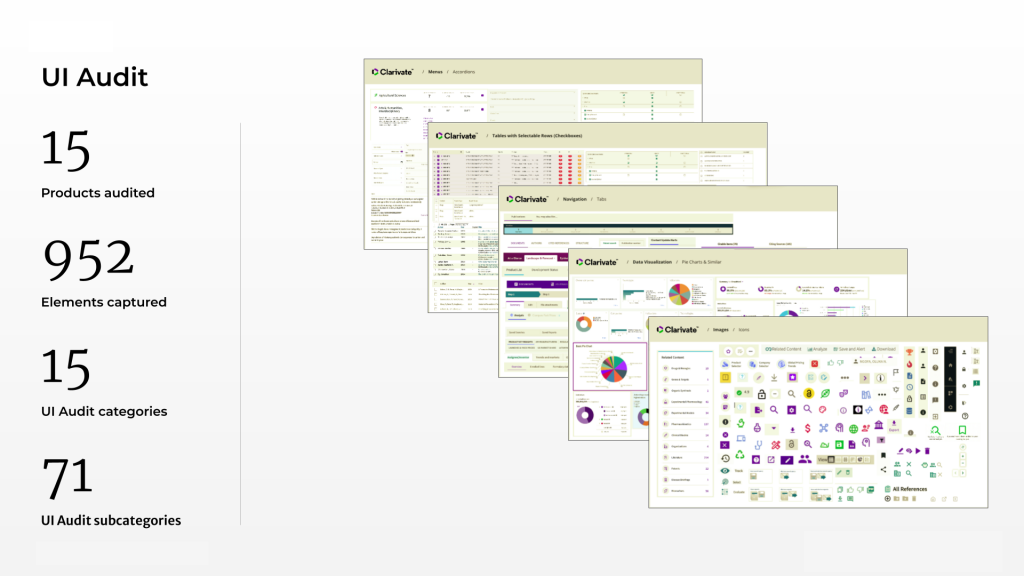
Finally, we created a north star concept, which is a design strategy for the Clarivate ecosystem presented through visualizations that communicate the essence of the desired experience. We focused on 5 prioritized CDX strategies as well as 4 tenets relating to the vision we have for the overall enterprise. You’ll see more of that a little later on.
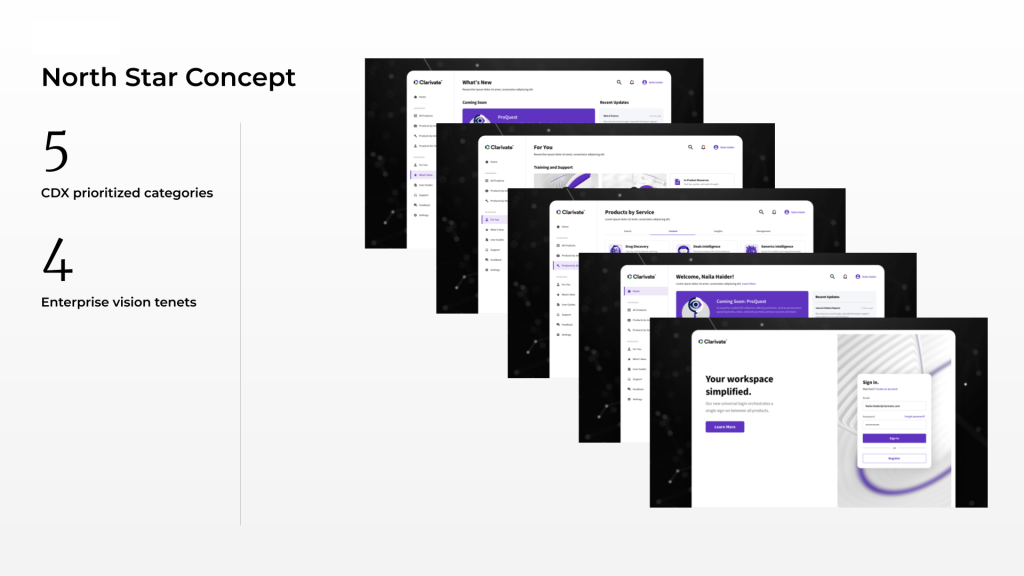
Few of the major takeaways from that work. One thing we learned through our stakeholder interviews and product walkthroughs is that there’s work to be done on the enterprise level to incorporate the One Clarivate concept and pull the disparate products together into a holistic, service-oriented model.
This is more future focused work, but we’ve begun to address this with something we called a service map, where we worked to categorize the 15 products we audited by the most basic functions they perform, which we identified as Search, Context, Insights, and Management. That’s linked here and housed in the appendix at the end of the deck for reference.
This is the kind of work that takes time and needs to come from the top down, but it helps us to frame the more immediate work by giving us context and the goal we need to work towards.
At the same time, the product teams have immediate needs to keep their customers happy and meet revenue goals. We’ve identified gaps in the CDX that can be addressed to help the teams continue to move forward.
In order to effect change in a way that is sustainable and contributes to the enterprise-level One Clarivate approach, we’ve established a phased, prioritized approach of updates to the CDX that will ultimately comprise a coherent design system that develops from the bottom up.
Ultimately, the two approaches will meet in the middle and reinforce each other for lasting change.
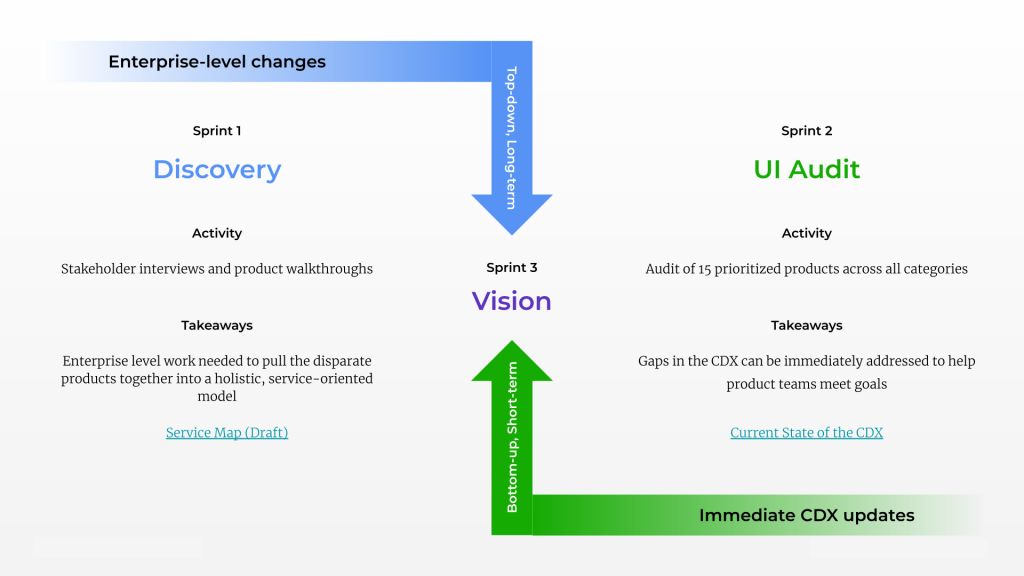
These next two visuals are some moves that we made with a few of the components from the CDX around those 5 categories. They are here purely for a visual and conceptual purpose and take into account some of the recommendations that we made from our UI Audit work around establishing new components that are currently missing, strengthening existing components, and enhancing the look of some of the existing components to be more aesthetically pleasing.
The short-term strategy is an immediately implementable strategy. Our short-term vision for the CDX is very tactical, and designed to validate, broaden and build the next leg of the journey to One Clarivate.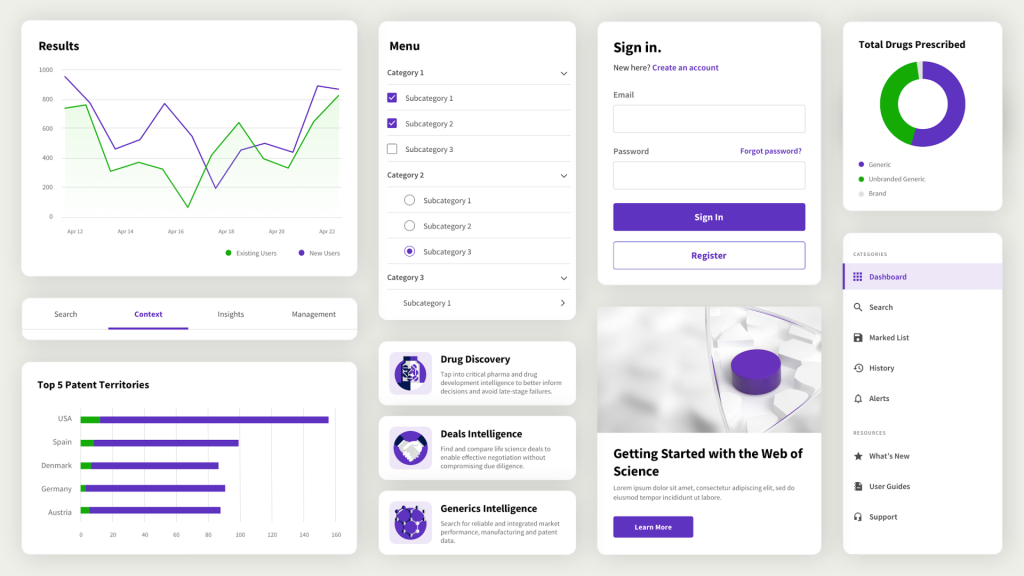
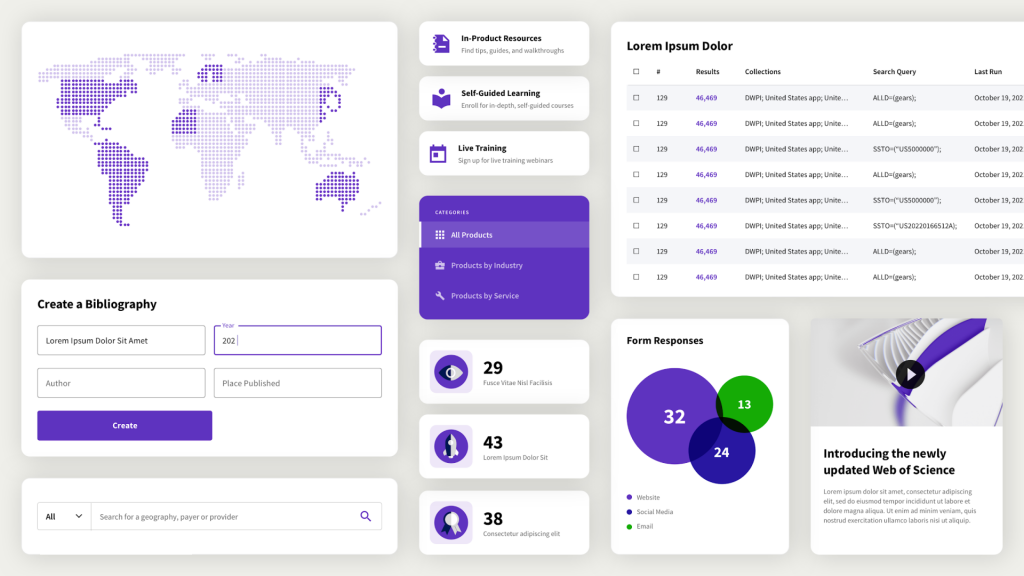
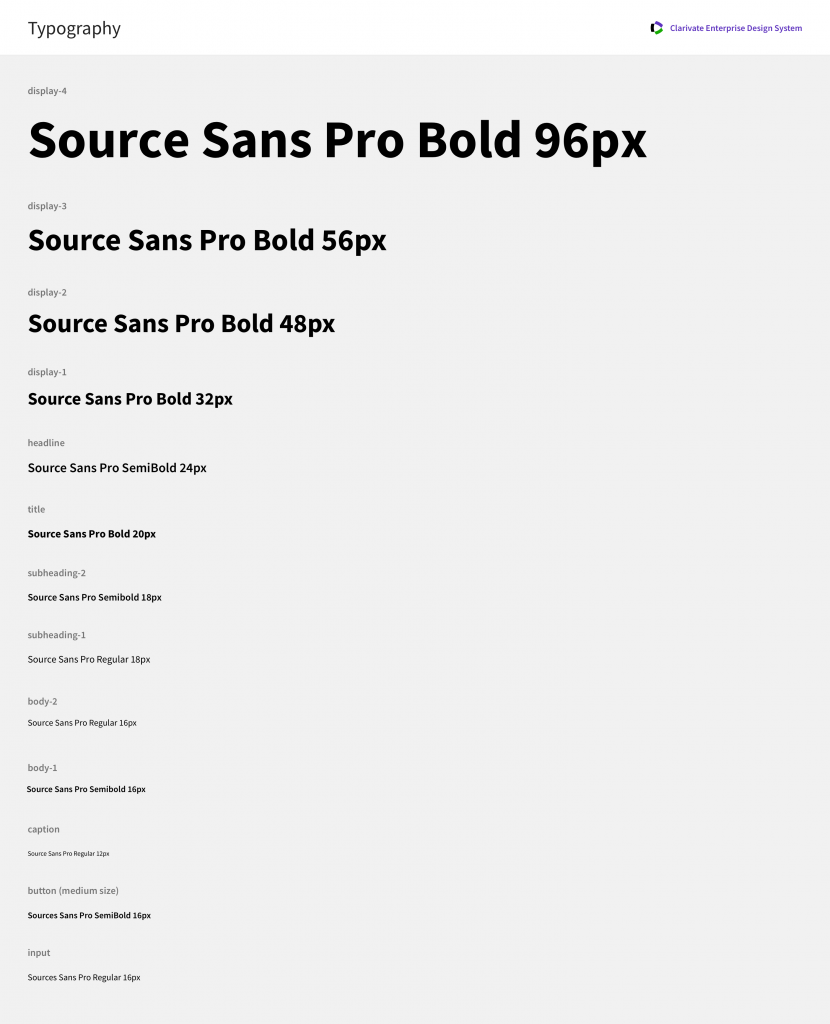
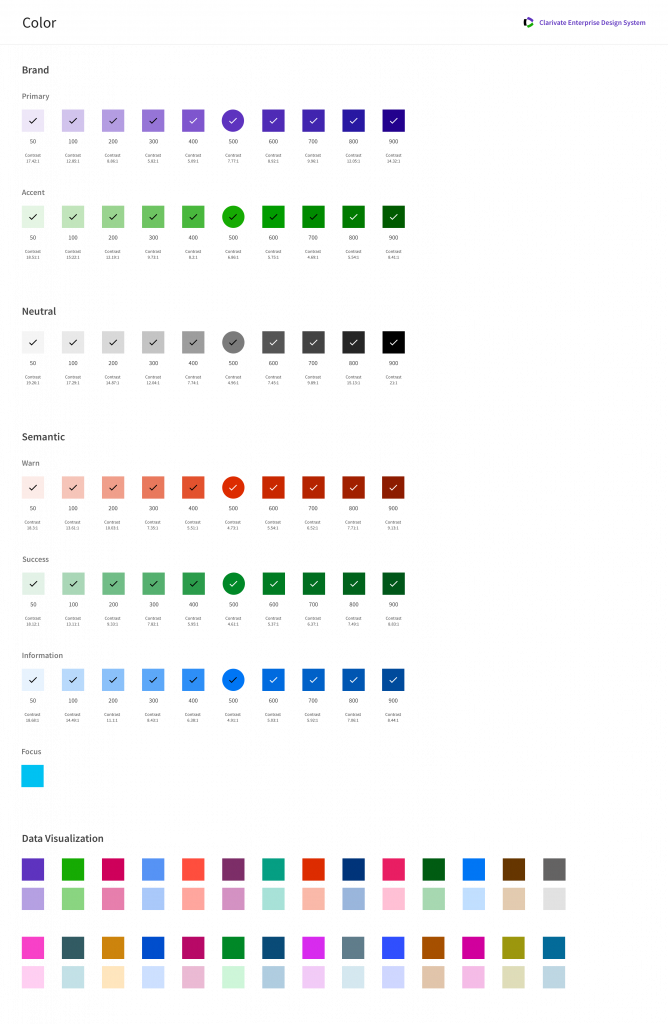

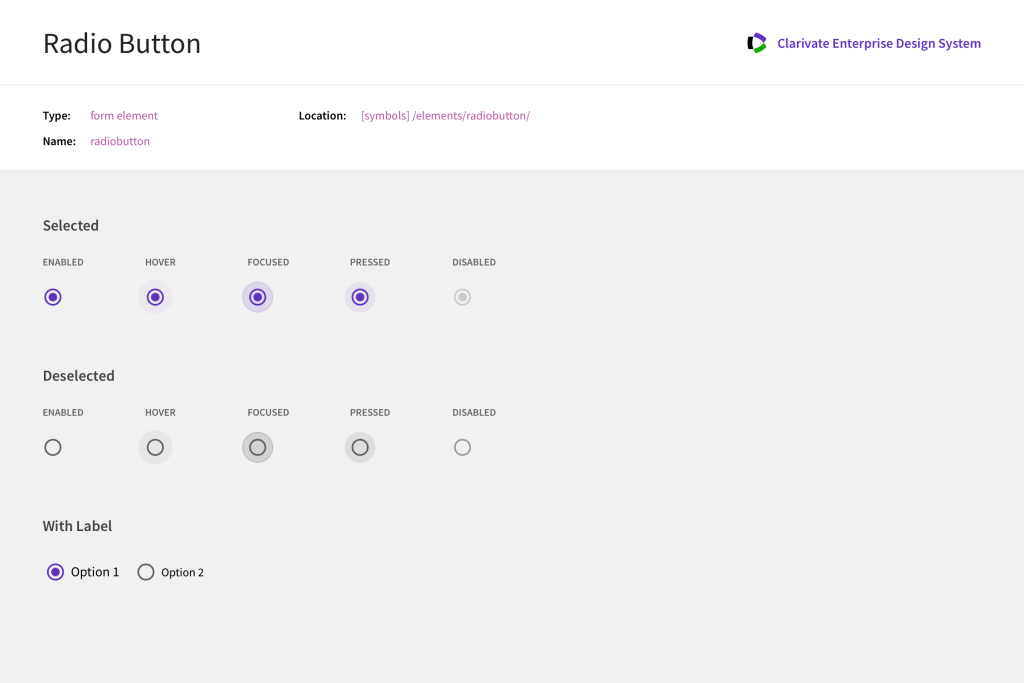
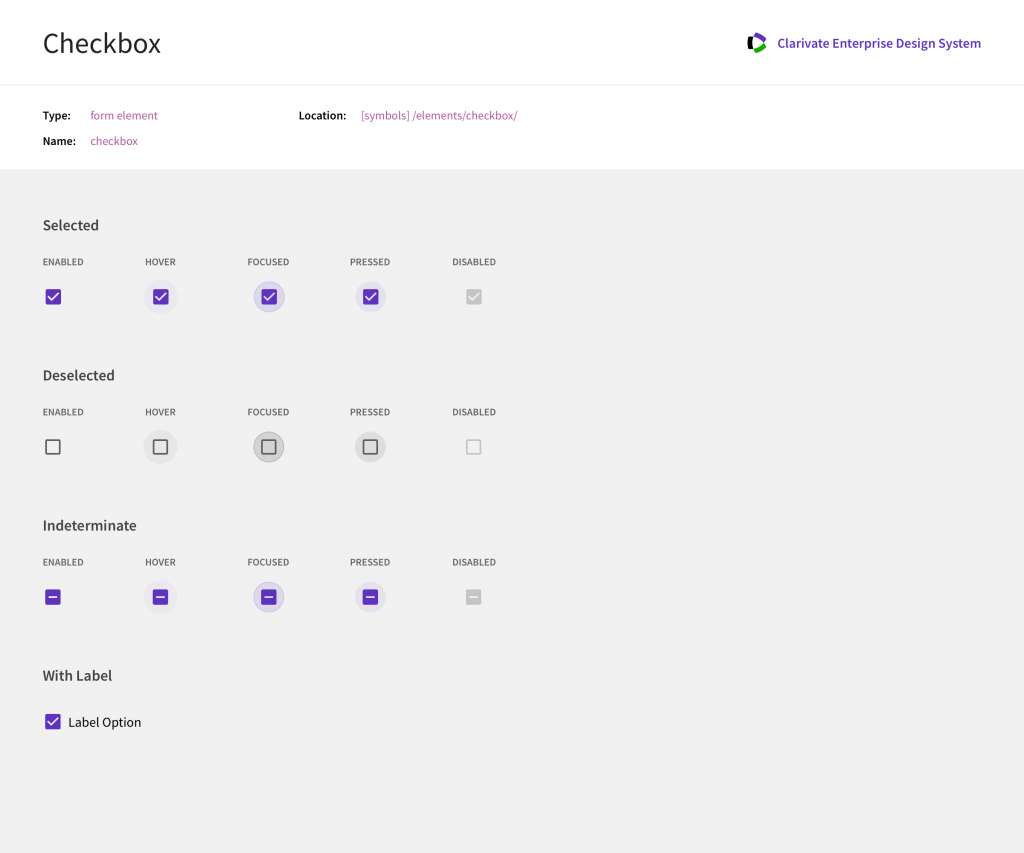
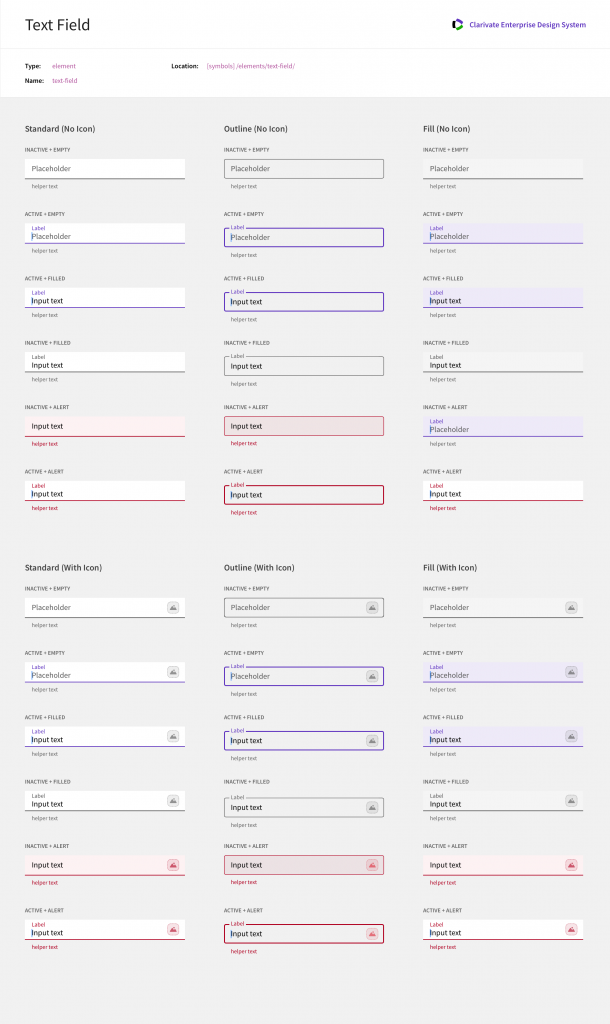
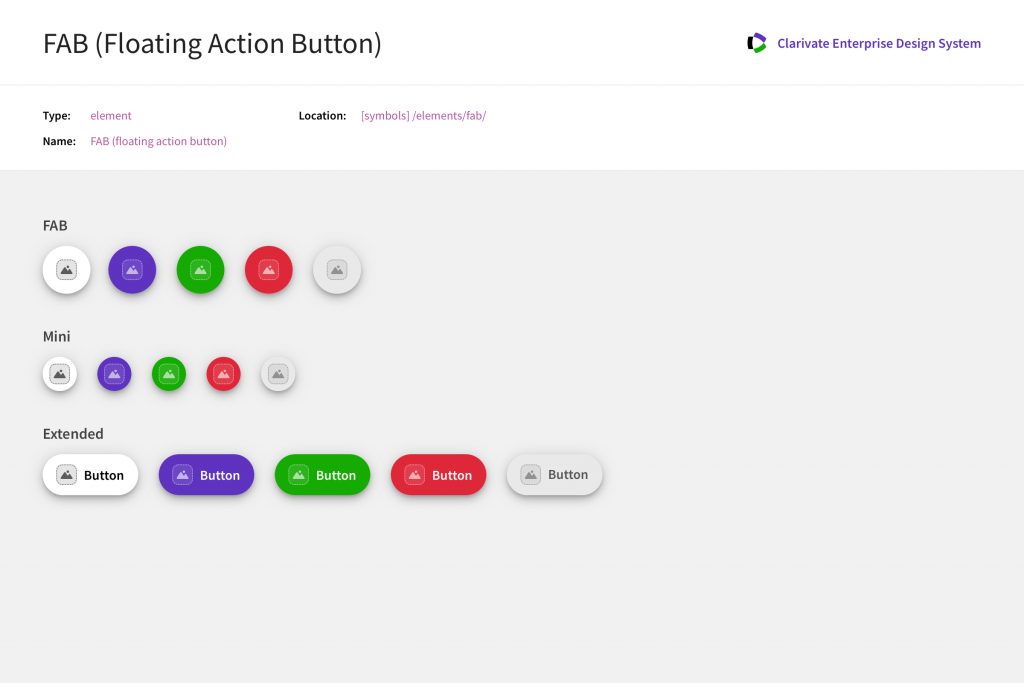
First we’ll test the vision and get early feedback through unmoderated or moderated user testing.
Then we’ll analyze those results, evaluate them and align any additional products to the priorities captured within our UI audit, and group them accordingly for the redesign and enhancement sprints.
And then finally, we’ll expand on our work and produce new, user-tested and development ready components, interactions and documentation.
A mature and productized design system can be a similar catalyst for the business that its products are for customers. It can change the way your teams create, shifting design’s focus to innovation instead of production.
And when the job of worrying about the look and feel is a thing of the past, teams can focus purely on storytelling through strategies like Trailers, designed to excite and build consensus for big ideas like cross-product workflows…
Pilots that leverage the design system fully while introducing new interactions, setting the standard for all next-gen product experiences…
and Series that extend those ideas into the portfolio helping to align everything to that greater vision for the business.
Planning is everything, and while we have plenty of coordinating to do with product teams, there are already efforts underway to organize priorities in a considered sequence.
As far as getting it in your hands, we’re planning to grow and expand the established modern workflow that is already in place with evolved documentation, governance, and useable outputs for all products.
Before/After Visuals






Description
Clarivate
Clarivate offers a suite of historic and recently acquired SaaS products. Over the years, this has inadvertently created a disjointed customer experience.
